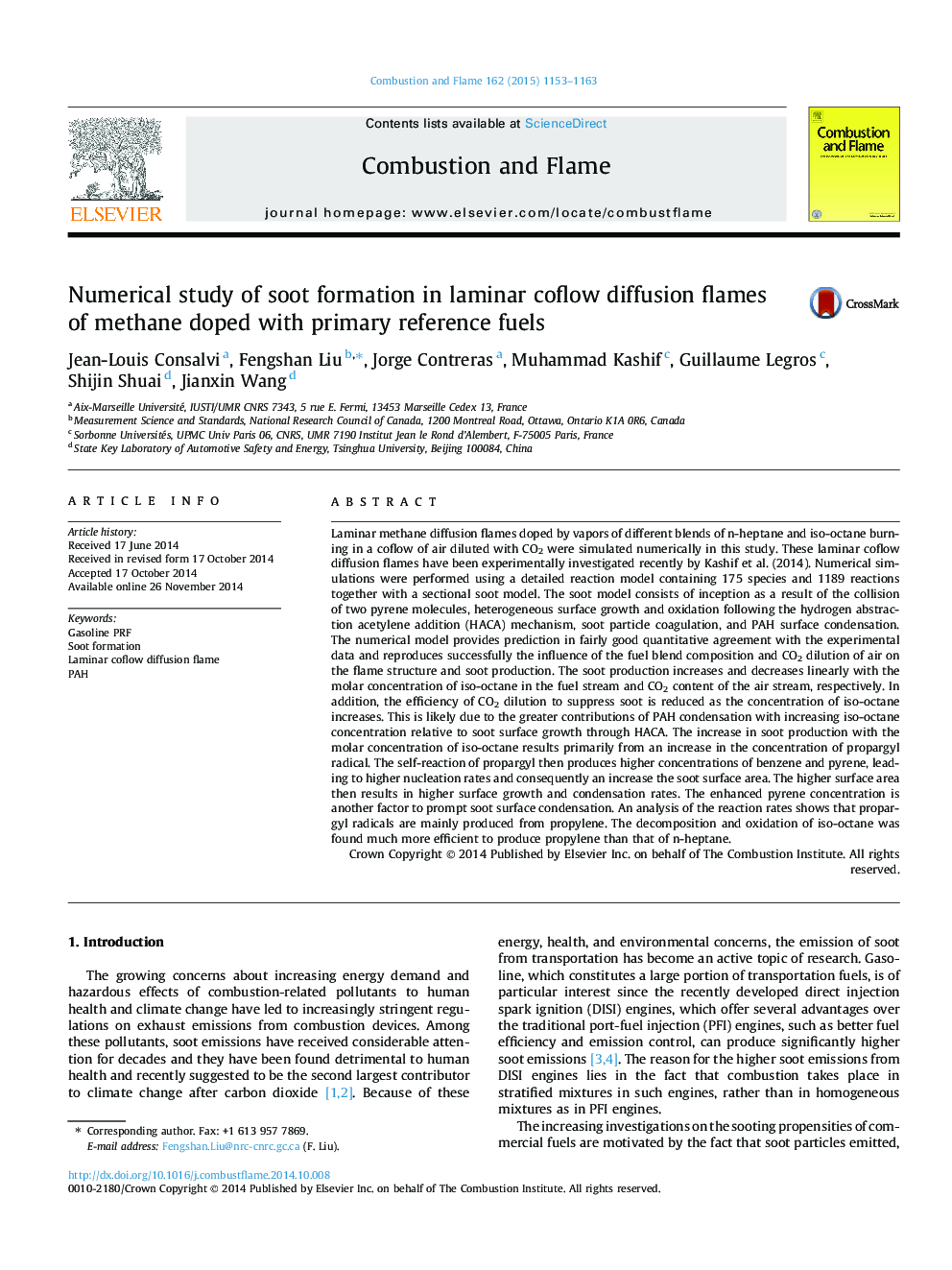| کد مقاله | کد نشریه | سال انتشار | مقاله انگلیسی | نسخه تمام متن |
|---|---|---|---|---|
| 168746 | 457952 | 2015 | 11 صفحه PDF | دانلود رایگان |
Laminar methane diffusion flames doped by vapors of different blends of n-heptane and iso-octane burning in a coflow of air diluted with CO2 were simulated numerically in this study. These laminar coflow diffusion flames have been experimentally investigated recently by Kashif et al. (2014). Numerical simulations were performed using a detailed reaction model containing 175 species and 1189 reactions together with a sectional soot model. The soot model consists of inception as a result of the collision of two pyrene molecules, heterogeneous surface growth and oxidation following the hydrogen abstraction acetylene addition (HACA) mechanism, soot particle coagulation, and PAH surface condensation. The numerical model provides prediction in fairly good quantitative agreement with the experimental data and reproduces successfully the influence of the fuel blend composition and CO2 dilution of air on the flame structure and soot production. The soot production increases and decreases linearly with the molar concentration of iso-octane in the fuel stream and CO2 content of the air stream, respectively. In addition, the efficiency of CO2 dilution to suppress soot is reduced as the concentration of iso-octane increases. This is likely due to the greater contributions of PAH condensation with increasing iso-octane concentration relative to soot surface growth through HACA. The increase in soot production with the molar concentration of iso-octane results primarily from an increase in the concentration of propargyl radical. The self-reaction of propargyl then produces higher concentrations of benzene and pyrene, leading to higher nucleation rates and consequently an increase the soot surface area. The higher surface area then results in higher surface growth and condensation rates. The enhanced pyrene concentration is another factor to prompt soot surface condensation. An analysis of the reaction rates shows that propargyl radicals are mainly produced from propylene. The decomposition and oxidation of iso-octane was found much more efficient to produce propylene than that of n-heptane.
Journal: Combustion and Flame - Volume 162, Issue 4, April 2015, Pages 1153–1163
